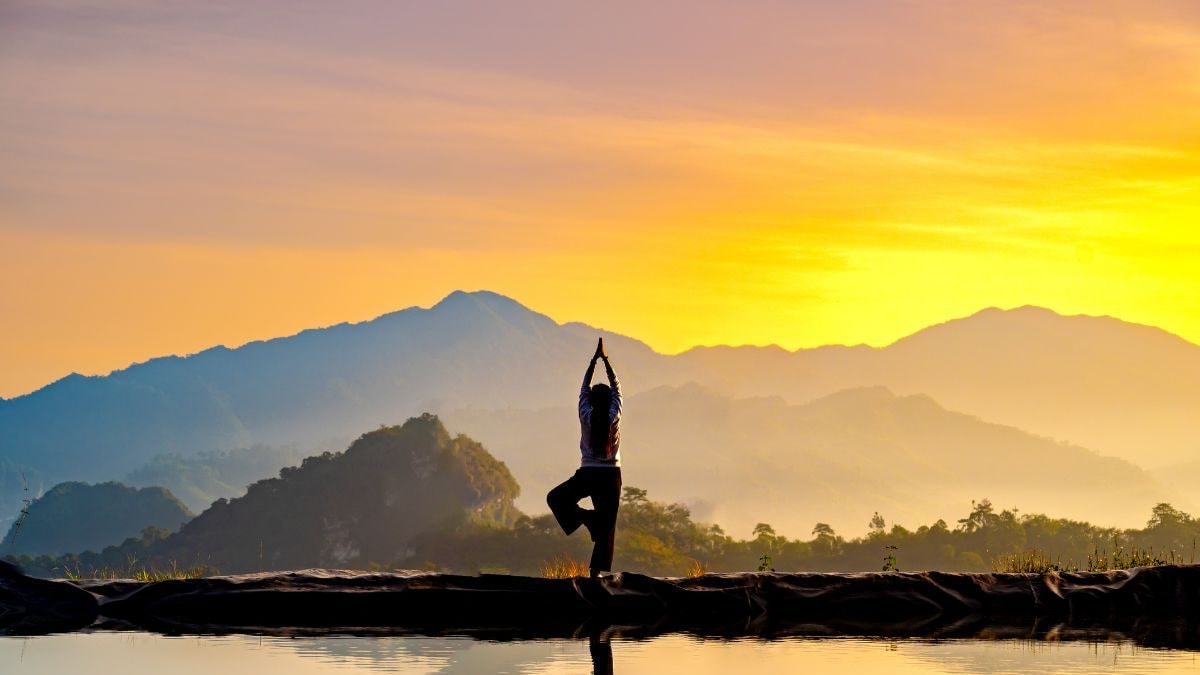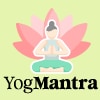YogMantra | Chuck Obsession With Abs and Try This New Yoga Sequence to Strengthen Your Core Muscles - News18
 [ad_1]
[ad_1]
Core muscles — which include abs — are located in the abdomen, pelvis and back and the importance of keeping them healthy for the sake of our posture, balance and stability has been acknowledged. Crucially, they work with other muscles in the body, taking the real impact of activities. A strong core also reduces chances of injuries from strain.
YOGA’S CONCERN FOR THE CORE
Exercise for the core area is emphasised in Yoga, not just for perfection of the muscles but also functioning of vital organs in the abdominal cavity, the nervous system, vascular vessels and secretion glands.
For instance, in Yoga poses, the digestive organs receive an increased blood supply due to the intra-abdominal compression, forceful movements of the diaphragm, and improved respiration.
In contrast, in other strenuous exercise, the digestive system is deprived of normal blood supply, which gets diverted to muscles. In his work Cyclopedia Yoga*, Yoga guru and former president of The Yoga Institute, Dr Jayadeva Yogendra, says: “Well-built muscles are necessary since they form an average of 43 per cent of one’s weight, but the development of the muscles should not be at the cost of other important systems of the body. Most of these techniques (of regular physical exercise) presuppose a sound constitution, which is often not the case.” He adds that movements, when too often repeated, cause much waste, especially of the muscular tissue, and also increased nervous agitation.
COMMONLY EMPLOYED YOGA EXERCISES FOR THE CORE
Yoga has poses usable as versions of planks, V-sits and bridges that are part of core training. Phalakasana, Setubandhasana, Naukasana, Vashishtasana, Ustrasana, Adhomukhasvanasana, Paschimottanasana, Dhanurasana, Pavanmuktasana, Virabhadrasana, Cat-Cow pose, Hastapadasana and Bhujangasana are some such poses.
However, the skill in Yoga practice lies in the doing. Rather than trying to see how much strain our bodies can withstand, the original aim of Yoga is to increase strength and promote good health. Yoga is non-violent, non-fatiguing, and should lead to poise.
SUSTAINABLE YOGA SEQUENCE FOR CORE MUSCLES
These lesser-known and seemingly innocuous poses can assist in building core strength — way into old age. In this sequence, more than repeating movements, perseverance is important. Keep aside 20 minutes every day for three months to start seeing benefits.
Kapalbhati Kriya – Trims belly fat and tones the abdomen area. Helps move from state of Tamas to Rajas (Inertia to Activity). Stimulates abdominal organs. Improves digestive-tract functioning.
• Sit comfortably on a chair with your spine erect.
• Take a deep breath and perform short, forceful exhalations, pulling the navel in. Do 30-40 exhalations.
• Inhalation is passive i.e. air fills the lungs automatically.
• Do 3-5 rounds with pauses between rounds.
Diaphragmatic breathing – Tones the abdomen, stimulates abdominal organs
• Sit comfortably with back erect and shoulders relaxed.
• Place one hand on the abdomen and feel it inflate as you inhale deeply and continuously.
• Exhale slowly, completely, drawing the navel towards the spine.
• Repeat 10 times.
Seated Parvatasana (Seated Mountain pose) – Pulls all abdominal muscles, stretches and exercises the waist, and helps to reduce a flabby abdomen.
• Sit in Sukhasana.
• While inhaling, raise your hands from the sides and bring them above the head. Once the palms touch, stretch the arms upwards to raise the upper body to its maximum height. The arms should be touching the ears, abdomen pulled in, and gaze fixed at a point ahead. Maintain this stretched position for a few seconds.
• Turn the palms outwards and, while exhaling, bring the arms back to starting position.
• Do five rounds.
Yogamudrasana (Symbol of Yoga, Psychic Union pose) – Deep abdominal compression massages the abdomen. It benefits internal organs and aids elimination.
• Sit erect in Padmasana, Vajrasana or Sukhasana.
• Take the arms behind, grasp the left wrist with the right hand and, expanding your chest, inhale fully.
• Exhaling, arch the spine and bend forward, until your forehead touches the floor. Maintain for a few seconds with breath suspended.
• Return to the original position, inhaling.
• Do five rounds.
Sarpasana (Snake pose) – An advanced version of Bhujangasana, it helps strengthen the core, and massage abdominal organs.
• Lie on your stomach with legs stretched out, hands by the hips, head resting on any side.
• Clasp the hands at the back, above the hips.
• Inhaling, lift the head and chest as much as you can without straining. Legs should be firmly on the ground. Stretch the clasped arms and stay there, breathing normally. The core, thighs, hips, back muscles and shoulder would be engaged in the final pose.
• Exhaling, release the hands and return to starting position and relax.
• Do five rounds.
Pada Sanchalanasana (Cycling in lying-down position) – Strengthens abdominal and lower back muscles.
• Lie on your back with legs folded at the knees, hands by the sides and palms facing downwards.
• Lift both legs and move them in cycling movements as if pedalling a bicycle, making big circles. Do this 10 times each, clockwise and anti-clockwise.
• In the next stage, move both legs together clockwise and then anticlockwise. After 10 rounds of each, lower the legs and straighten them.
Savasana – End the session with relaxation.
(Note: This article is for information purposes. Always check with your physician before starting any exercise protocol. Remember, Yoga practices must first be learnt from an experienced Yoga teacher.)
*Cyclopedia Yoga Vol. I, With Special Information on Asana (Ed. Dr Jayadeva Yogendra Ph.D), The Yoga Institute, 1997.
The author is a journalist, cancer survivor and certified yoga teacher. She can be reached at swatikamal@gmail.com.





Comments
Post a Comment